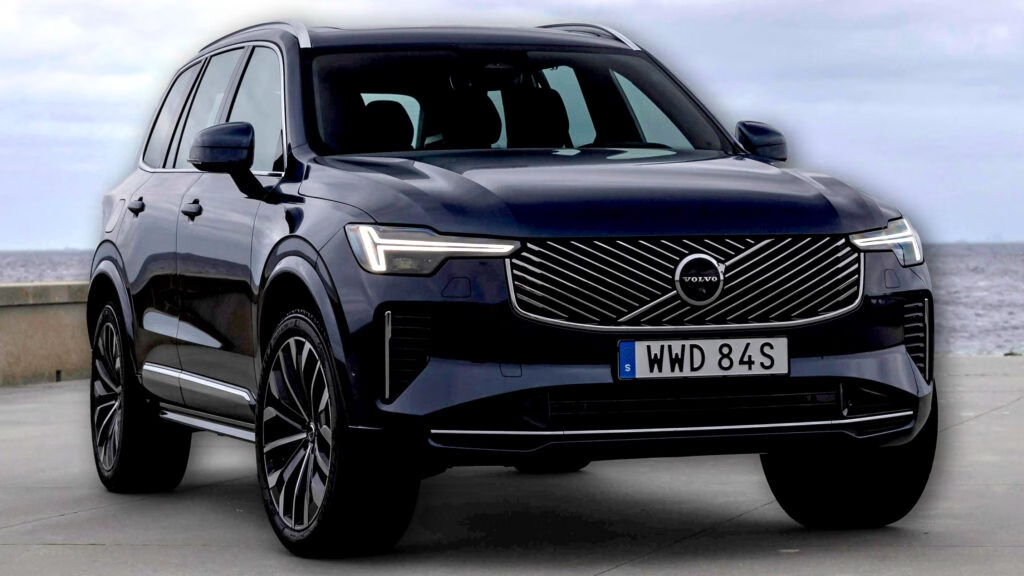Why Isn’t Volvo Retiring the XC90 Yet?
If you thought the Volvo XC90 was about to bow out, you’re not alone. After all, the Swedish automaker has been making noise about going all-electric by 2030, and the new EX90 EV was supposed to be the XC90’s spiritual successor. But here’s the twist: Volvo’s CEO has just confirmed that a new generation of the XC90 is in the works. So, what’s driving this change of heart? Turns out, it’s a mix of shifting market realities, evolving tech, and a dash of good old customer demand.
What’s Changing Under the Hood for the Next XC90?
Let’s talk powertrains, because that’s where things get interesting. The next XC90 is expected to borrow an advanced plug-in hybrid (PHEV) setup from the China-bound XC70. Why does this matter? The XC70’s 40 kWh battery delivers an impressive 112 miles (180 km) of electric-only range on the CLTC cycle—far outpacing the current XC90 T8’s 44-mile (71 km) WLTP range from its 18.8 kWh battery. For families who want the flexibility of electric driving without the range anxiety, this is a game-changer.
Volvo’s CEO, Hakan Samuelsson, put it plainly: European buyers, in particular, still want plug-in hybrids with longer range. And with stricter CO2 targets looming in the EU, a beefier PHEV system isn’t just a nice-to-have—it’s a necessity. According to the European Environment Agency, average new car emissions need to fall below 95g CO2/km, and hybrids are a crucial bridge as fully electric adoption lags behind projections.
Will the XC90 Get a Brand-New Platform?
Here’s where things get a bit murky. The current XC90 rides on Volvo’s aging SPA (Scalable Product Architecture), which has been around since 2014. There’s speculation that the next-gen model could move to the Geely-sourced SMA (Scalable Modular Architecture), already linked to the XC70. Alternatively, Volvo might adapt the SPA 2 platform from the EX90 or even the upcoming SPA 3 from the EX60. But as of now, Volvo is keeping its cards close to the chest.
Why the Platform Matters: A new platform could mean better ride quality, more interior space, and the ability to integrate future tech—think advanced driver assistance and over-the-air updates. It also opens the door for more efficient hybrid and electric powertrains. But switching platforms isn’t cheap or simple, so Volvo has to weigh the investment against how long the XC90 will stay in the lineup.
How Is Volvo Responding to Slower EV Demand and Tariffs?
The EV transition hasn’t been as smooth as automakers hoped. Global EV sales are still growing, but not at the breakneck pace many predicted. According to the International Energy Agency, EVs made up about 18% of new car sales worldwide in 2023, but growth rates are cooling in Europe and North America. That’s left brands like Volvo rethinking their timelines.
Add in the recent wave of tariffs on imported vehicles—especially those built in China—and you’ve got a recipe for rapid strategy shifts. Volvo is moving production of the XC60 to its Charleston, South Carolina plant by 2027 to sidestep US tariffs, and shifting EX30 output from China to Belgium for the European market. The upshot? The company needs a strong, flexible hybrid lineup to keep buyers happy while navigating trade headwinds.
How Does the XC90 Fit Alongside Volvo’s Electric EX90?
The EX90 was supposed to be the XC90’s replacement, but delays in production (thanks to supply chain hiccups and software bugs) have kept the XC90 in the spotlight. The two SUVs will now coexist, offering buyers a choice: go all-in on electric with the EX90, or stick with the proven comfort and flexibility of a hybrid XC90.
For many families, especially those in rural areas or with long commutes, a plug-in hybrid still makes more sense. You get electric driving for daily errands and a gas engine for road trips—no need to plan your life around charging stations. Volvo’s move to keep the XC90 alive is a nod to this practical reality.
What’s the Real-World Impact for Buyers?
If you’re in the market for a luxury SUV, this news is good for you. The next XC90 will likely offer a longer electric-only range, lower emissions, and the latest safety tech. It’ll also benefit from Volvo’s ongoing commitment to comfort and Scandinavian design. And with Volvo’s track record for safety—five-star Euro NCAP ratings and industry-leading driver assistance features—you can expect the new XC90 to keep raising the bar.
The big takeaway? Volvo’s XC90 isn’t about perfection—it’s about smarter adjustments. Start with one change this week, and you’ll likely spot the difference by month’s end. Whether you’re eyeing a hybrid for the first time or just want a family hauler that adapts to your needs, the XC90’s next chapter is shaping up to be its most versatile yet.

